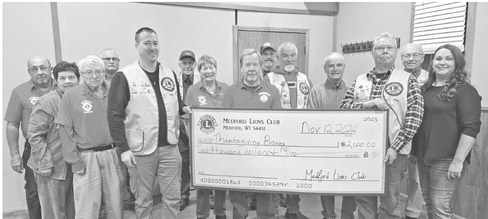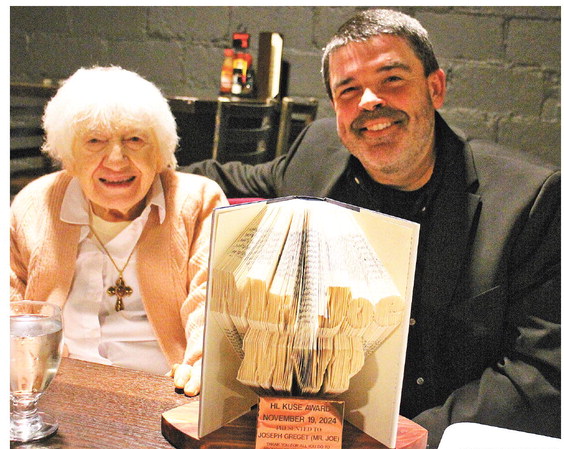Committee says new shop should stay in Rib Lake
Proposed location for new shop will be at CTH D and Rib Road near schools
A highway shop will stay in the village of Rib Lake under a plan approved by members of the county’s highway committee on Monday. The proposal goes to the full county board for approval on September 30.
For more than a year the county has looked at options for either repairing or replacing its aging highway shop facility located on CTH D in Rib Lake just north of Great Northern Cabinetry. The structure houses equipment and serves as a base of operations for the plow routes serving a large portion of the northern and northeastern part of the county. There is no room to expand or build a new shop at the current site. This led the county to look to alternate locations.
While earlier proposals looked at moving the shop outside the village to be closer to Hwy 13, they were discarded as being cost prohibitive in regard to access to water, sewer and natural gas service. At Monday’s meeting committee members were asked to pick from between a Westboro location and one on the Joe Desris property on CTH D and Rib Road just west of the Rib Lake schools complex.
According to highway commissioner Ben Stanfley, both sites were about equal in a per-acre purchase cost and ongoing operation expenses. The village parcel has a price of about $60,000 for about 14.5 acres and the Westboro estimate was $50,000 for 12.15 acres a difference of about $28 per acre in price. Both sites have access to natural gas and municipal sewer with Rib Lake having access to village water while Westboro would require a well to be drilled and ongoing costs for operating the well.
Stanfley said that taking all the costs into considerations, the Westboro location would be more expensive to operate on a year-to-year basis. Beyond cost, however, Stanfley said the bigger factor in endorsing the Rib Lake location is the minimal impact it would have on snowplow routes.
A route analysis prepared by the state for the two locations identified potential efficiencies with having the plows based in Westboro, however in reviewing the proposal with the crew members who actually plow in that area, there were concerns about the routes being too long and not feasible. “I like the existing one,” Stanfley said of the existing plow routes based on the shop being in the village. Stanfley also noted that the potential efficiencies would not amount to under $1,000 a year as part of the county’s $500,000 snowplowing budget.
Stanfley said the only concern with the Rib Lake property was with being able to properly locate the salt storage shed so that it was outside the 1,200 foot setback guideline for the village’s well. He noted the current salt shed is just over 800 feet away from the well, so any distance would be an improvement. Desris was at the meeting and said he would be willing to adjust the property line bordering his property to the north to give the county enough room to meet the setbacks.
Commission members agreed with Stanfley’s recommendation and voted to move ahead with proposing the village of Rib Lake site to the full county board.
The new shop will have a cost of about $1.5 million and will be about double the size of the county’s western Taylor County shop. About half of the building, equivalent in size to the grader shed at the fairgrounds will be cold storage for equipment that is used on seasonal basis, freeing up space around the main highway shop in Medford. The remaining area will be heated and used for plow trucks and maintenance equipment.
In other business, committee members: approved a formal set of guidelines for the county bridge aid program in preparation for them to be sent out to all town board chairmen. The bridge aid program is a cost-sharing effort which allows participating municipalities to pay half the cost of qualified culvert and bridge replacements with the remaining half to come from a special county levy. The guidelines approved by the committee are a mixture of state regulations, established informal guidelines from past commissioners, and engineering best practices. One such guideline regarding the length of culverts and the desire to have a slope from the road edge to the end of the pipe, drew questions because this is not always possible due to the location of the right of way in the area. Stanfley said this is why there are guidelines and they would work with towns in this situation. He said in any cases if there’s a question from the towns where they did not agree with the commissioner, it would go to the full highway committee for their decision.


